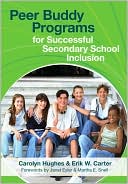Category Books
- Fiction Books & Literature
- Graphic Novels
- Horror
- Mystery & Crime
- Poetry
- Romance Books
- Science Fiction & Fantasy
- Thrillers
- Westerns
- Ages 0-2
- Ages 3-5
- Ages 6-8
- Ages 9-12
- Teens
- Children's Books
- African Americans
- Antiques & Collectibles
- Art, Architecture & Photography
- Bibles & Bible Studies
- Biography
- Business Books
- Christianity
- Computer Books & Technology Books
- Cookbooks, Food & Wine
- Crafts & Hobbies Books
- Education & Teaching
- Engineering
- Entertainment
- Foreign Languages
- Game Books
- Gay & Lesbian
- Health Books, Diet & Fitness Books
- History
- Home & Garden
- Humor Books
- Judaism & Judaica
- Law
- Medical Books
- New Age & Spirituality
- Nonfiction
- Parenting & Family
- Pets
- Philosophy
- Political Books & Current Events Books
- Psychology & Psychotherapy
- Reference
- Religion Books
- Science & Nature
- Self Improvement
- Sex & Relationships
- Social Sciences
- Sports & Adventure
- Study Guides & Test Prep
- Travel
- True Crime
- Weddings
- Women's Studies
Peer Buddy Programs for Successful Secondary School Inclusion » (New Edition)

Authors: Carolyn Hughes, Erik W. Carter
ISBN-13: 9781557669803, ISBN-10: 1557669805
Format: Paperback
Publisher: Brookes, Paul H. Publishing Company
Date Published: January 2008
Edition: New Edition
Author Biography: Carolyn Hughes
Book Synopsis
When secondary schools are committed to inclusion, everybody wins—schools make progress toward IDEA and NCLB requirements, and students with and without disabilities enjoy higher academic achievement and new friendships. A good peer buddy program can play an invaluable role in making inclusion happen, and this guidebook shows educators exactly why and how.
Carolyn Hughes and Erik Carter, highly respected experts well-known for their work with peer buddy programs, give schools all the step-by-step guidance they need to get a program started and keep it going. Educators will discover how to
• establish a peer buddy program and spark student interest
• clarify the roles and responsibilities of everyone involved—teachers, counselors, administrators, parents, and students
• create successful peer-buddy matches using students' strengths, needs, and common interests
• develop smooth procedures for day-to-day program implementation
• guide peer buddies in providing appropriate, effective academic support
• promote inclusion in social arenas such as school clubs and the lunchroom
• assess and expand the program, incorporating participant feedback
To help with every phase of program implementation, readers will also get a wealth of practical, research-based materials: extensive case examples, program checklists, suggested classroom adaptations, sample forms such as peer buddy applications and evaluation tools, and learning activities school staff can use to brainstorm and solve problems.
With the proven program model in this one-of-a-kind guide, educators will transform secondary schools into caring andcompassionate communities where all students help each other learn.
Table of Contents
About the Authors vii
Foreword Janet Eyler ix
Foreword Martha E. Snell xi
Preface xiii
Acknowledgments xvii
"He's My Best Friend!" Why Start a Service-Learning Peer Buddy Program?
Benefits of Inclusion of All Students 3
The Importance of Inclusion and Student Interaction
Legislative and Policy Initiatives Supporting Inclusion
Philosophical Support for Inclusion
Research Basis for Inclusion
Challenges to Secondary School Inclusion
Overview of the Service-Learning Movement
What Is a Service-Learning Peer Buddy Program?
What Does a Peer Buddy Program Look Like? 23
Case Example: The Metropolitan Nashville Peer Buddy Program
Program Variations
How to Use the Rest of this Book
"How Do I Start?" Setting Up a Peer Buddy Program
Laying the Groundwork 41
Importance of Establishing a Base of Support
Developing a Credit Service-Learning Course
Form: Figure 3.1
Recruiting Participants 57
Encouraging Student Participation
Ways to Recruit Peer Buddies
Strategies for Screening Students
Strategies for Matching Students
Forms: Figures 4.1 and 4.2
Developing Procedures and Communicating Expectations 77
Developing Program Implementation Procedures
Communicating Expectations to Peer Buddies Through Orientation Sessions
Compiling Peer Buddy Handbooks
Forms: Figures 5.2, 5.3, and 5.5
"How DoI Keep It Going?" Administering a Peer Buddy Program
Supporting Peer Buddy Participants 105
Addressing Peer Buddy Support Needs
Communicating with Peer Buddies
Helping Peer Buddies Assist Students with Disabilities
Communicating with and Supporting School Staff
Showing Appreciation for Peer Buddy Program Participants
Forms: Figures 6.1, 6.2, 6.3, 6.4, and 6.5
Implementing Peer Buddy Programs Inside and Outside the Classroom 131
Including Students in General Education Classrooms
Including Students in Noninstructional School, Extracurricular, and After-School Activities
Including Students in Community-Based Instruction
Helping Students Make the Transition from Special to General Education Classrooms
Form: Figure 7.1
Evaluating, Sustaining, and Expanding a Peer Buddy Program 155
Evaluating Peer Buddy Programs and Incorporating Participant Feedback
Working with Advisory Boards to Sustain Programs
Expanding a Peer Buddy Program
Forms: Figures 8.1, 8.2, 8.3, and 8.5
Resources 183
Index 193
Subjects
 Educational Theory, Research & History
Educational Theory, Research & History  Psychology of Education
Psychology of EducationEducation & Teaching
 Guidance & Counseling
Guidance & Counseling  Academic Counseling
Academic CounselingNonfiction
 Psychology
Psychology  Psychology - Theory, History & Research
Psychology - Theory, History & ResearchNonfiction
 All Nonfiction
All Nonfiction  Educational Guidance & Counseling
Educational Guidance & CounselingPsychology & Psychotherapy
 Psychology - Theory, History & Research
Psychology - Theory, History & Research  Adolescent Psychology & Psychiatry
Adolescent Psychology & PsychiatryPsychology & Psychotherapy
 Psychology - Theory, History & Research
Psychology - Theory, History & Research  Educational Psychology
Educational PsychologyMedical Books
 Psychology & Psychotherapy
Psychology & Psychotherapy  Psychology - Theory, History & Research
Psychology - Theory, History & Research
